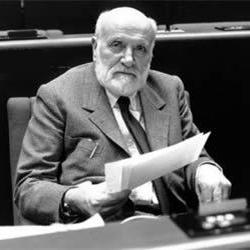The majority system is the victory of the majority
Modern constitutional law providesthe choice of how to exercise their right to appoint authorities in the state. This action was called the electoral process, expressed in one of the types of systems: majority, proportional or mixed.
The majority system today is the mostthe preferred model for the election of representatives of government bodies, existing in developed countries. On its basis representative bodies in Canada, the USA, Australia, Japan and many other countries are formed. What is the attractiveness and effectiveness of this type?
The majority system of elections is the essence and typology.
The majority of votes is precisely this ruleis the main function of this electoral system. In fact, the majority system of elections provides that for a certain candidate, the number of votes provided for in the Constitution or in the electoral legislation should be given, at which the candidate will be accepted by the majority of electors.
Mention of the number of votes is not accidental. Depending on him, three types of this type of election are distinguished:
- absolute majority - according to him the candidatea position is considered elected if and only if half the population having the right to vote, plus one person, will vote in his favor;
- relative majority - election under this scheme implies a simple majority of votes than other candidates;
- qualified majority - the country's legislation clearly fixes the threshold, the achievement of which becomes sufficient to win elections.
However, it is worth noting that there is noan ideal embodiment of any option in the legislation of a large number of states. Typically, types enter into interaction at different stages of elections or at their various levels. The majority system allows such actions, in particular, if it is a matter of higher authorities. A vivid example of the "alloy" of the first and second types is the election of the President of France. The first round is considered to be the only necessary only if the candidate receives an absolute number of votes. If this does not happen, then the second round is held between the candidates who took the first and second place, according to the relative majority system.
The majority system is ambiguouseffectiveness of action. One of the advantages is the establishment of a stable two or three party system in the state. But the strongest drawback may be ignoring the opinion of that part of the population that voted for the outsiders of the elections.
Majoritarian and proportional electoral systems - points of divergence.
What is the majority votesystem, was discussed above. Concerning the proportional electoral system, it should be noted that, as opposed to the first, it is based on the choice not of a specific candidate, but of a party. Most legal scholars and political scientists are inclined to think that it is with the proportional election system that the electoral map of the state is most fully disclosed. A significant contradiction with the majority system is the scrupulous counting of votes and the determination of their number of shares in representation in government bodies.
The majority system does not have the so-called. "Threshold of election". Unlike it, proportional in most cases still determines it. But this is done in order to prevent the passage to the elected bodies of parties and independent candidates, whose weight in political life is too low.
Despite the differences in their processes,majority and proportional electoral systems often function simultaneously, form a kind of subtype - a mixed electoral system. This symbiosis is becoming more attractive in countries whose territory is rich in places of compact residence of certain peoples.
As a result, the majority system appears asa set of election methods in which one candidate is required to secure the support of the majority of the electorate. Such a system excellently suits the election of solely represented government bodies (for example, the President in France, or senators in the United States), but has a number of significant shortcomings in electing collective bodies (Parliament or local councils).
</ p>>







